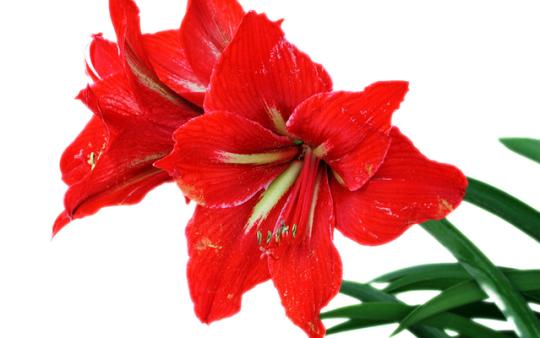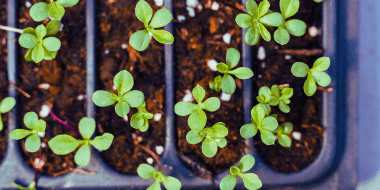I have always been a stickler for a real Christmas tree. And we never bought the ones in the mall parking lot. There's something about the whole ritual around it - the family outing in the snow to the tree farm, the haggling over which was the best tree and whether it was too tall or not for the house, everybody taking a turn at the saw, and the triumphant haul out of the bush. The sweet sappy smell of the tree that permeates the house over the holidays is intertwined with all of my memories of that time of year. I’m sure we were always the last ones in the neighbourhood with the tree standing too. We just couldn’t bear to part with it - especially after the sacrifice it had made. Back then no one even thought about a Christmas tree alternative.
Since I moved away many years ago I have always gone ‘home’ for the holidays because I lived in far away places. It never made sense to have a tree in my own home. Once I started to have my own family, we started creating our own rituals. Last year we ‘rescued’ a white pine tree that was slated to be bulldozed in a few months. The tree itself was over 20 feet tall so we just took the top part and cut it to fit in the living room. One last chance at shining glory before becoming wood mulch and brush piles. It was the strangest looking tree ever but we loved it. True to "tradition", it graced my home until March. This year I’m not sure what we will do. We're starting to question the idea of cutting down a tree for such a short lived purpose.
Thankfully there are many options for bringing living greenery and colour to your family for the holidays--whatever holiday you celebrate! Maybe some of these Christmas tree alternatives will become your new tradition.
TREES
Living potted trees
These are small potted trees that you use as your Christmas tree and then plant in the garden afterward. You can only bring them inside for 10 to 15 days or they will start to dry out on you and die. The temperature shock is just too much. As the ground will likely be frozen you won’t actually be able to plant them until spring but they do need to go back outdoors for the rest of the winter. The recommended species for this are Douglas Fir and Norway Spruce. If you can, let them acclimatize a little bit before the full shock of central heating by leaving them in your garage for a few days and then keep them in a cool part of the house away from vents and fireplaces if possible.
Mini Christmas tree
This is a nickname given to the Norfolk Island Pine, which is not really a pine at all. It doesn’t matter - it does the trick - it’s green and shaped like a Christmas tree and can live indoors all year long. This houseplant does best with a couple of hours of direct sunlight a day and a relatively high humidity. It won’t get that sizeable but you can repot it into larger containers every year.
Rosemary tree
I love the idea of this. Most rosemary does not survive Canadian winters, so needs to be brought indoors anyway. You can purchase little rosemary plants pruned into Christmas tree shape or train your own to grow that way with a little practice. This may not smell like the trees I had growing up, but I think it’s definitely on par. And you can use it in your holiday cooking to boot.
Outdoor tree
Most of us only have so much room to transplant a living potted tree outside every year. Why not cherish the evergreens we already have on our property? Decorate an outdoor tree and you don’t have to worry about it going into shock (unless you have really tacky decorations!) or remember to water it. If you don’t have any evergreens on your property or live in an apartment building why not adopt a tree in your local park or a wilderness area nearby? You could decorate it in private and then invite family and friends out on a winter picnic and surprise them with it, or make it a communal affair. This seems like a beautiful way of honouring a tree that has graced you with its beauty for many years.
OTHER PLANTS
Poinsettias
These are the quintessential holiday plant. Steeped in rich reds, whites, and green they grace many homes and offices this time of year. They are toxic to cats and dogs though so keep a watchful eye on your pets. While most people toss theirs to the curb after the holidays they can be planted outdoors in spring and allowed to grow as an annual.
Christmas cactus
This easy-to-care-for houseplant blooms at just the right time for the holidays with no special skill required. It likes a cool sunny room. Misting the leaves will help keep humidity up around the cactus and the blooms should last longer.
Amaryllis
These unassuming bulbs create the most striking massive blooms. They are really quite impressive and stately plants. The Huntington Society of Canada sells Amaryllis bulbs as a fundraiser every year so I end up with several around my house because my father has Huntington’s Disease. They take 6 to 8 weeks to bloom once potted so plan ahead if you want them to be flowering for Christmas.
If it’s the messiness of the traditional Christmas tree that makes you cringe or the thought of cutting one down for a few weeks of tradition, you can still enjoy the smells and beauty of greenery and plant life in your home by trying some of these innovative Christmas tree alternatives. Try something different this year and start a new holiday tradition that connects you and your family to the earth and living plants at a time when most are dormant in the dark winter nights.
*Originally published March 3, 2013









